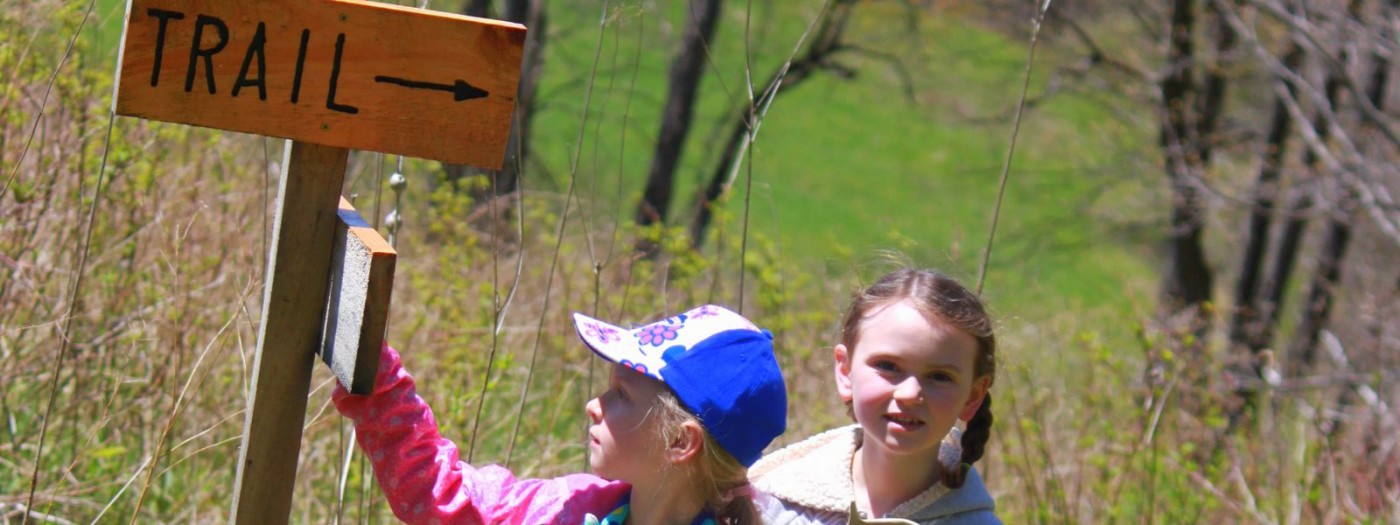How to Be a Good Traveler on Your Nature Outings
Land trails and waterways are shared by people, animals, and plants – and human visitors should observe a few best practices.
The locations featured on Gofingerlakes.org are owned and managed by various organizations; please follow the regulations at each location. Also see our page about safety and disclaimers. Generally, at all locations, a good maxim for visiting protected natural areas is found on Finger Lakes Land Trust signs:
Take only pictures, leave only footprints.
Here are other best practices for your outdoor adventures.
Hikers and bikers
As a general rule, bikers should yield to hikers, and both must yield to equestrians (see below). On trails where mountain biking and hiking are permitted, it is important for bikers and hikers to be aware of their surroundings. This is especially true for bikers racing down steep descents and around sharp turns. Here, the hiker has the right of way, and bikers must pay close attention to the trail ahead.
However, as with all rules, there are some grey areas. If a biker is riding up a steep hill and a hiker is walking down, the friendly thing for the hiker to do is step off the trail and let the biker pass.
Horses
Equestrians always get the right-of-way. If you are on the trail and see a horse approaching, whether you are on foot or bike, stop moving and step aside to give the horse and rider a chance to pass. Make sure you step fully off the path, on the downhill side if possible, giving the horse plenty of space. Speak softly to the horse and rider as they approach and do not make any sudden movements when the horse passes.
When approaching a horse and rider from behind, announce your presence from as far away as possible so you don’t startle the horse. Only pass when the rider says that it is safe. Dogs should always be leashed and kept as far away from the horse as possible.
Uphill vs. downhill
Generally, downhill traffic yields to uphill traffic. If you are hiking uphill, you get the right-of-way. Similarly, bikers climbing up the trails get the right-of-way over bikers on their way down.
Dogs
If you bring along your four-legged friends, keeping them leashed and under control is essential for the safety and enjoyment of all. In many locations it is the official rule, but in all locations it is a best practice.
Pack in, pack out
This one is so obvious that it need not be mentioned. Except that it needs to be mentioned — because once in a while you still see human garbage laying around a natural area. Of course, people sometimes leave items by accident, such as water bottles, so do a mental inventory of your belongings and leave the place as clean as you found it — or better!
Collecting
In some locations, collecting fossils and other treasures is expressly forbidden. But even where there is no posted rule, it’s a great idea to leave nature alone for the enjoyment of those who will come after you. Even future generations!
No bushwacking
Stay on the marked trails and designated areas. That’s the best way to stay safe AND avoid trampling delicate plant life and fragile insect homes. It only takes a few people to casually start a new trail by bushwacking off the main trail, and before you know it a new part of the forest or wetland is getting heavily traveled. Please let the official land stewards determine where trails should be.
Private property
Many landowners are serious about their private property. Take a moment to read the local trail signs and get familiar with the lay of the land. Sometimes, even if you feel like you are on a designated trail, you can wander onto private lands. Be smart and respect property rights, not least because many private property owners are the key to conservation in the Finger Lakes region — by donating easements and otherwise being good stewards of their own land.
COVID-19 Practices
See our COVID-19 Updates page about trail safety and park closings in response to the coronavirus crisis.





